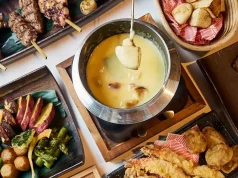
Food is an integral part of every culture, offering a delicious gateway to understanding a country’s history, traditions, and people. Culinary travel has become a popular way for travelers to explore the world—one dish at a time. From bustling street markets to Michelin-starred restaurants, food lovers can embark on exciting journeys that tantalize their taste buds and enrich their cultural knowledge. In this article, we’ll explore how culinary adventures can transform travel experiences and highlight some tips for making the most of your food-filled journey.
1. The Rise of Culinary Travel
Over the past few years, culinary travel has grown exponentially as more people seek authentic, immersive experiences. Travelers no longer settle for sightseeing alone; they want to taste the destination. Whether it’s indulging in pasta in Italy, spicy curries in India, or fresh sushi in Japan, culinary tourism is about experiencing a country’s cuisine firsthand.
Why it’s Thriving:
- Cultural Immersion: Food is a reflection of a region’s culture, and through local dishes, travelers can connect with the stories and traditions of the people who create them.
- Unique Experiences: From hands-on cooking classes to vineyard tours, culinary travelers can engage in activities that go beyond simply eating.
- Instagram-Worthy Moments: As social media plays a big role in travel, sharing food photos has become a trend, helping people document their gastronomic adventures.
2. Top Culinary Destinations Around the World
Certain countries are renowned for their cuisine, offering a feast for the senses. Here are a few culinary hotspots that should be on every food lover’s radar:
- Italy: Famous for its regional dishes, Italy offers everything from Roman pizza to Sicilian seafood. Don’t forget to try authentic gelato while strolling through the streets of Florence.
- Thailand: Known for its vibrant street food scene, Thailand’s aromatic curries, pad Thai, and fresh mango with sticky rice will keep you coming back for more.
- Mexico: With its rich flavors, Mexican cuisine is a must-try. Savor traditional tacos, mole, and tamales, all packed with spices and ingredients unique to the region.
- France: From flaky croissants to gourmet cheese, France is a haven for food enthusiasts. Wine lovers will especially enjoy the country’s diverse wine regions, each with its own distinct flavors.
- Morocco: A blend of Mediterranean, Arabic, and Berber influences, Moroccan food like tagine and couscous is full of spices and bold flavors that create a truly unique dining experience.
3. How to Plan Your Culinary Adventure
When embarking on a food-focused journey, planning is key to getting the most out of the experience. Here are some tips to help you curate the perfect culinary trip:
- Research Local Specialties: Each region has its own iconic dishes. Before traveling, research the local cuisine and make a list of must-try dishes.
- Book Food Tours: Guided food tours are an excellent way to sample a variety of local delicacies and learn the history behind them. Plus, these tours often include hidden gems that you may not find on your own.
- Take a Cooking Class: There’s no better way to dive into the local food culture than by learning how to prepare traditional dishes from expert chefs or locals.
- Explore Local Markets: Markets are the heartbeat of a city’s culinary scene. They offer a taste of local ingredients, and they’re often the best places to enjoy authentic street food.
- Use Travel Apps: To find the best local food spots, consider downloading these traveling apps that specialize in food recommendations and reviews, helping you discover top-rated restaurants and hidden gems in any destination.
4. Sustainability in Culinary Travel
As culinary travel grows, so does the importance of sustainable practices. Travelers are becoming more conscious of their environmental impact, and this extends to the way they eat while abroad. Supporting farm-to-table restaurants, reducing food waste, and dining at local, family-owned establishments are excellent ways to ensure your culinary adventures are both enjoyable and responsible.
Tips for Sustainable Culinary Travel:
- Eat Locally: Seek out restaurants that source ingredients from local farmers, reducing carbon footprints and supporting the local economy.
- Avoid Over-Touristed Restaurants: Instead of dining at tourist-centric spots, find hidden gems where locals eat.
- Mind Food Waste: Only order what you can eat, and bring reusable containers for leftovers.
- Embracing Street Food Culture Street food is often the soul of a city’s culinary scene, offering affordable, authentic, and often extraordinary flavors. Exploring street food allows travelers to experience the local diet and everyday eating habits of a culture. Be sure to:
- Try Regional Specialties: Street vendors frequently serve regional specialties that are hard to find in restaurants.
- Observe and Engage: Watching how street food is prepared can offer insight into local cooking techniques and ingredients.
- Ask Locals for Recommendations: Locals can guide you to the best street food stalls and ensure you avoid less reputable vendors.
Navigating Dietary Restrictions and Preferences
Traveling with dietary restrictions or preferences can be challenging, but it’s manageable with some preparation. To ensure a satisfying culinary experience:
- Learn Key Phrases: Familiarize yourself with phrases related to your dietary needs in the local language.
- Research Options: Look for restaurants or food tours that cater to your dietary requirements before you travel.
- Carry Snacks: If you’re unsure about finding suitable options, carry some safe snacks for emergencies.
Culinary Festivals and Events
Attending food festivals and events can be an exciting way to immerse yourself in a region’s culinary culture. These events often feature local chefs, street food vendors, and specialty ingredients.
- Check Festival Dates: Plan your trip around notable food festivals and events to experience a variety of local cuisines.
- Participate in Tastings and Workshops: Many festivals offer tastings, cooking demonstrations, and workshops that provide deeper insights into the cuisine.
Food and Drink Pairings
Exploring food and drink pairings can enhance your culinaryjourney. Local beverages, from wines and beers to teas and spirits, often complement regional dishes beautifully.
- Pair with Local Drinks: Try local wines, beers, or spirits that are recommended with traditional dishes.
- Learn about Pairing Traditions: Understanding local pairing traditions can deepen your appreciation of the cuisine and its cultural context.
Historical and Cultural Context
Understanding the historical and cultural context of a dish can enrich your culinary experience. Many foods have stories or historical significance that reflects a region’s heritage.
- Research Before You Go: Learn about the history and significance of local dishes before your trip.
- Ask About Origins: Don’t hesitate to ask locals or guides about the history and cultural significance of the dishes you try.
Documenting Your Culinary Journey
Keeping a record of your culinary experiences can be a fun way to reflect on your travels and share your discoveries with others.
- Take Photos and Notes: Document dishes, ingredients, and restaurant details to remember your favorite experiences.
- Create a Travel Blog or Journal: Share your culinary journey with friends, family, or a wider audience through a blog or journal.
FAQs: Culinary Journeys
1. What is culinary travel? Culinary travel involves exploring new destinations through their food and drink. It focuses on experiencing local cuisine, dining traditions, and food culture, providing a deeper connection to the destination than traditional sightseeing.
2. How can I find the best local food experiences when traveling? To find the best local food experiences, research regional specialties, seek recommendations from locals, and use food-focused travel apps. Consider joining guided food tours or visiting popular street food markets.
3. Are there any tips for managing dietary restrictions while traveling? Yes, learn key phrases related to your dietary needs in the local language, research restaurants or food tours that cater to your restrictions, and carry safe snacks. Communicating your dietary needs clearly to restaurant staff can also help ensure a pleasant dining experience.
4. How can I make my culinary travel more sustainable? To make your culinary travel more sustainable, eat at local, farm-to-table restaurants, avoid over-touristed spots, and be mindful of food waste. Supporting establishments that prioritize sustainable practices and reducing your environmental footprint can make a positive impact.
5. What should I do if I experience food safety issues during my trip? If you experience food safety issues, seek medical attention if needed and stay hydrated. To prevent issues, choose well-reviewed establishments, ensure food is cooked thoroughly, and avoid street food that looks unsanitary.
6. Are there any popular culinary festivals I should consider attending? Yes, many destinations host culinary festivals that are worth attending. Examples include the San Sebastián Gastronomika in Spain, the Melbourne Food and Wine Festival in Australia, and the Bangkok Street Food Festival in Thailand. Research festivals in your destination to find one that aligns with your interests.
7. How can I document and share my culinary experiences? You can document your culinary experiences by taking photos, keeping a travel journal, or starting a blog. Sharing your discoveries through social media or travel review sites can also inspire others and provide valuable insights into your culinary adventures.
8. What are some common mistakes to avoid when embarking on a culinary journey? Common mistakes include not researching local cuisine, neglecting dietary restrictions, ignoring food safety practices, and not planning ahead for popular food spots. Avoiding these mistakes will help ensure a more enjoyable and authentic culinary experience.
Conclusion: The World on a Plate
Culinary travel is about more than just eating; it’s about connecting with cultures, experiencing traditions, and creating memories that last a lifetime. From the spices of India to the pasta of Italy, every dish tells a story, and each meal is a stepping stone to deeper cultural understanding. By planning your journey with intention, incorporating sustainable practices, and embracing new flavors, you can explore the world through the universal language of food.
So, grab your fork, and let your next adventure take you on a culinary journey that will satisfy both your stomach and your soul!





